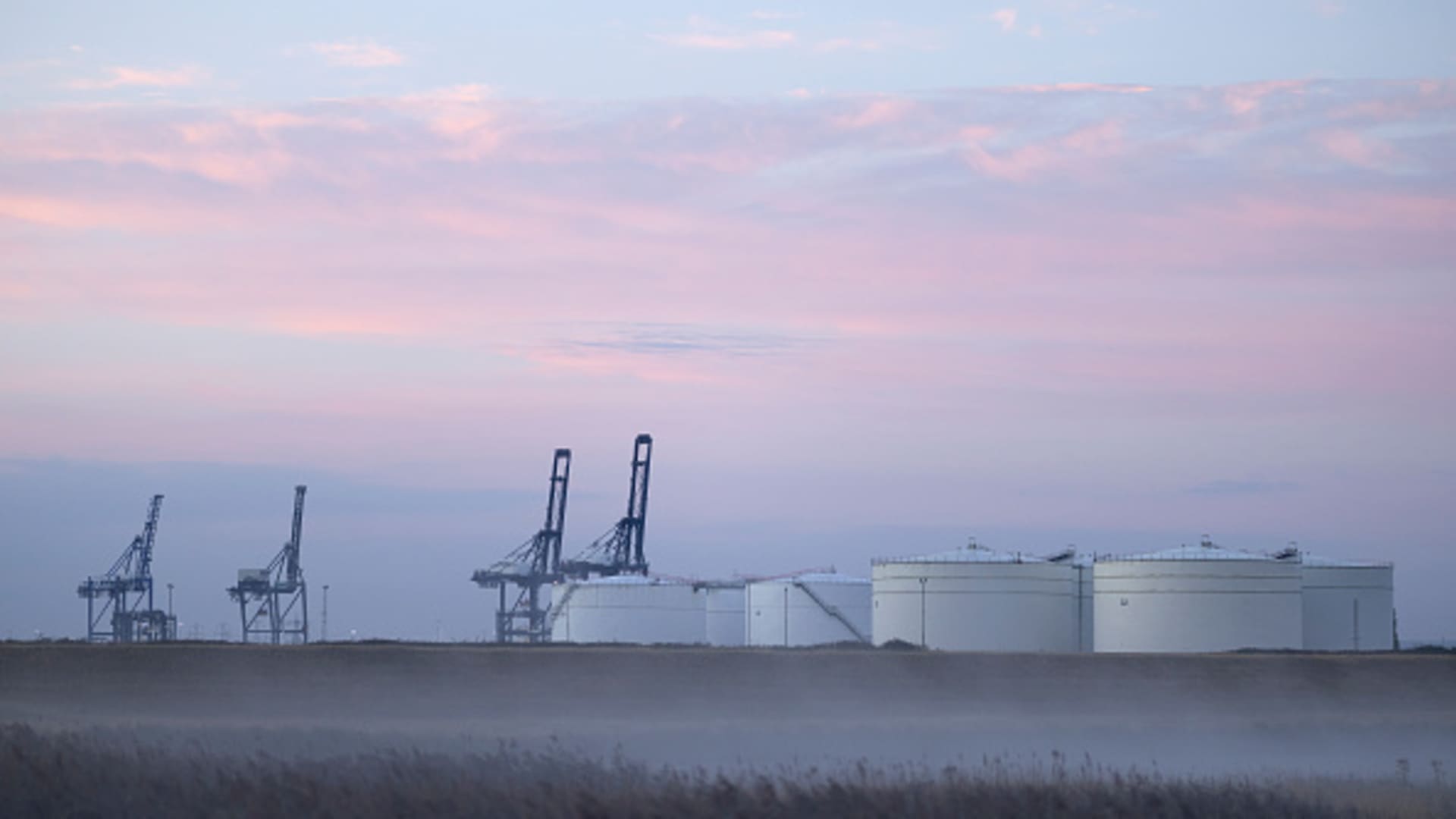Liquefied natural gas (LNG) storage units.
Dan Kitwood | Getty Images News | Getty Images
The largest flow of liquefied natural gas (LNG) supply is coming online and will transform the global market, bringing far-reaching and lasting effects, RBC Capital Markets said.
“A new wave of LNG supplies – the largest yet – is set to reshape the global market in the coming years, with wider implications than the previous surge given the growing interconnections between regional gas markets following the Russia- Ukraine,” analysts from the Investment Bank wrote in a note.
The injection of supply is likely to push the market into a prolonged period of oversupply until the end of 2026, which will last until 2030, with prices likely to move below double digits, analysts such as RBC’s Anan Dhanani have predicted .
Futures for the Dutch Title Transfer Center (TTF), a European benchmark for natural gas transactions, traded at $12.78 per mmbtu on Wednesday on the New York Mercantile Exchange.
Throughout the year, a growing chorus of analysts have warned that tepid demand growth coupled with impending waves of export capacity could lead to a massively oversupplied market. As a flood of planned infrastructure continues to flood the market, it is unclear whether demand will grow to absorb each wave.
Oversupply and low prices underline bearish sentiments in the LNG sector, Rystad Energy senior analyst Masanori Odaka said. Suppliers are now increasingly prioritizing used LNG for shipping use over arbitrage opportunities ie. profit margins.
Commodity arbitrage involves the simultaneous or consecutive buying and selling of commodities across different markets to profit from price differences.
Global LNG trade has doubled in the past decade, rising from about 240 metric tons in 2014 to more than 400 metric tons last year, driven largely by Russian pipeline gas disruptions in Europe, according to RBC Capital . Some had perceived geopolitical risk as an opportunity in the market.
The investment bank predicted that global liquefaction capacity, the total amount of LNG that can be produced each year, will increase by about 50% by the end of the decade. The US and Qatar will maintain their position as the world’s largest suppliers, with a combined market share of almost 50% in 2030, RBC added.
Many private companies and state-owned entities have plans to increase capacity, “not only to curb European consumption, but also to capture an expected increase in consumption rates, especially in Asia,” RBC analysts said.
But demand from the Asia-Pacific region, the largest importer of LNG, is expected to grow by an average of 5% per year. About 70% of this growth will come from China, India and South Korea.
Meanwhile, LNG prices have not seen major fluctuations despite escalating geopolitical tensions. “Surprisingly quiet” was how Meg O’Neill, managing director and CEO of Woodside Energy, described the market.
“To me, that’s probably a sign that there are enough sources of supply around the world to help mitigate any temporary supply disruptions coming out of the Middle East. And that’s probably true for both oil and LNG ,” O’Neill told CNBC on the sidelines of the annual International Energy Week conference in Singapore.
There are other looming challenges for the LNG sector that could affect global markets. The 2024-2025 Northern Hemisphere winter is on the horizon and existing contracts for Russian gas deliveries to Europe via Ukraine will expire at the end of 2024, the International Energy Agency said.
“This could mean the end of all gas deliveries to Europe from Russia via Ukraine,” the IEA wrote in a recent note. “This in turn would require higher LNG imports into Europe next year, resulting in a tighter global gas balance.”
